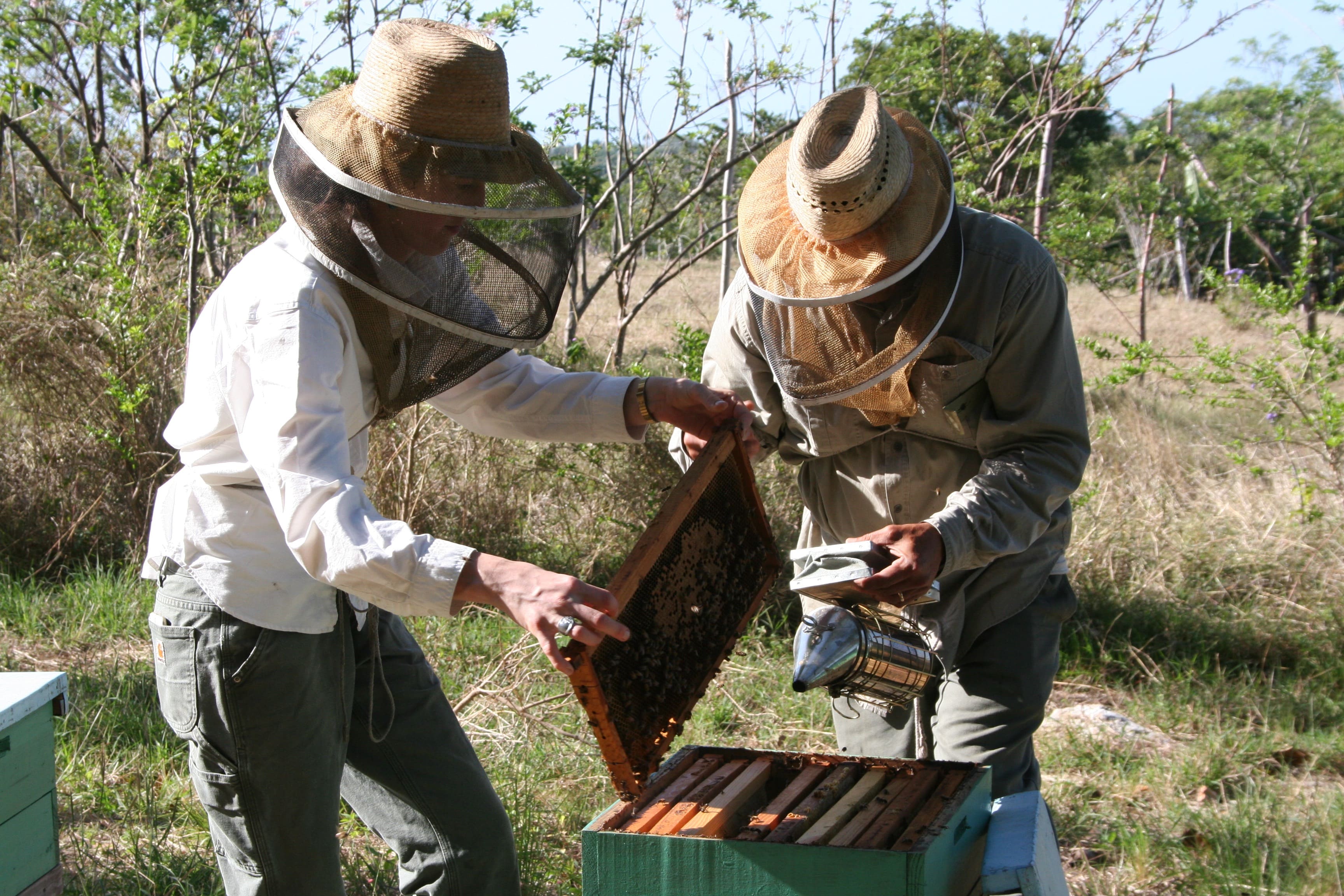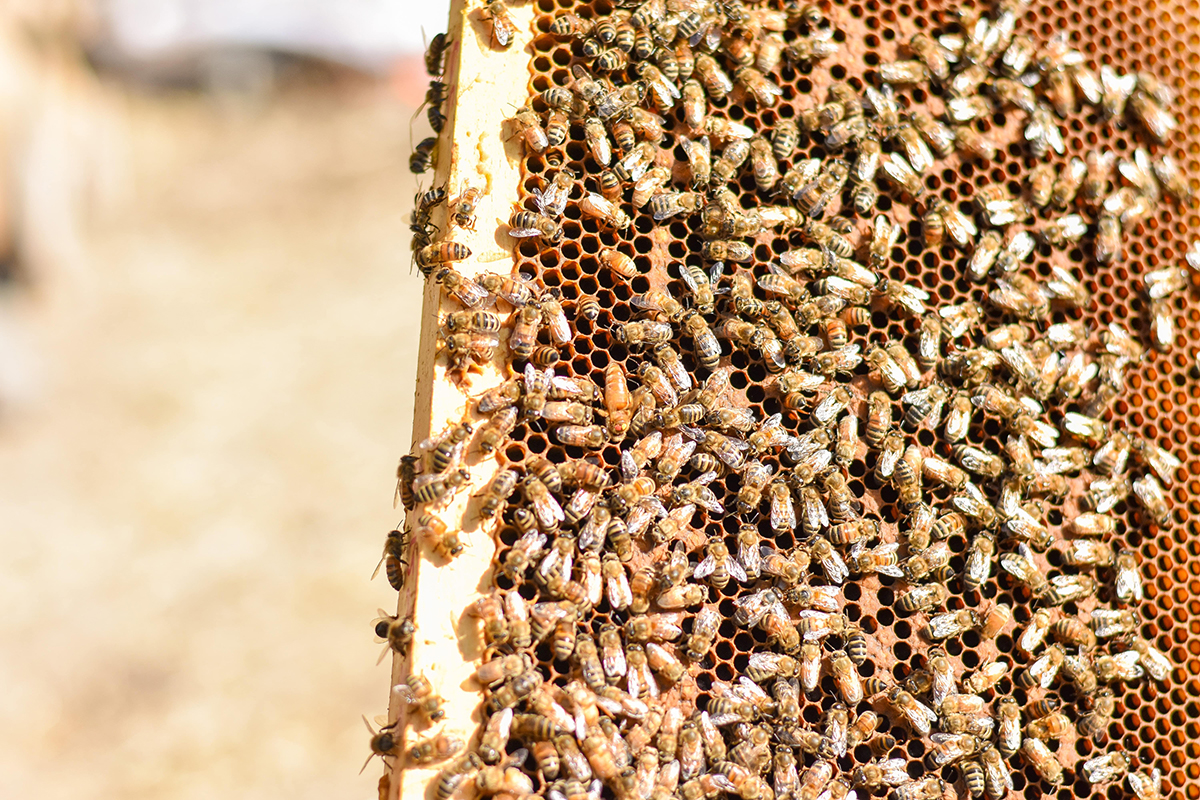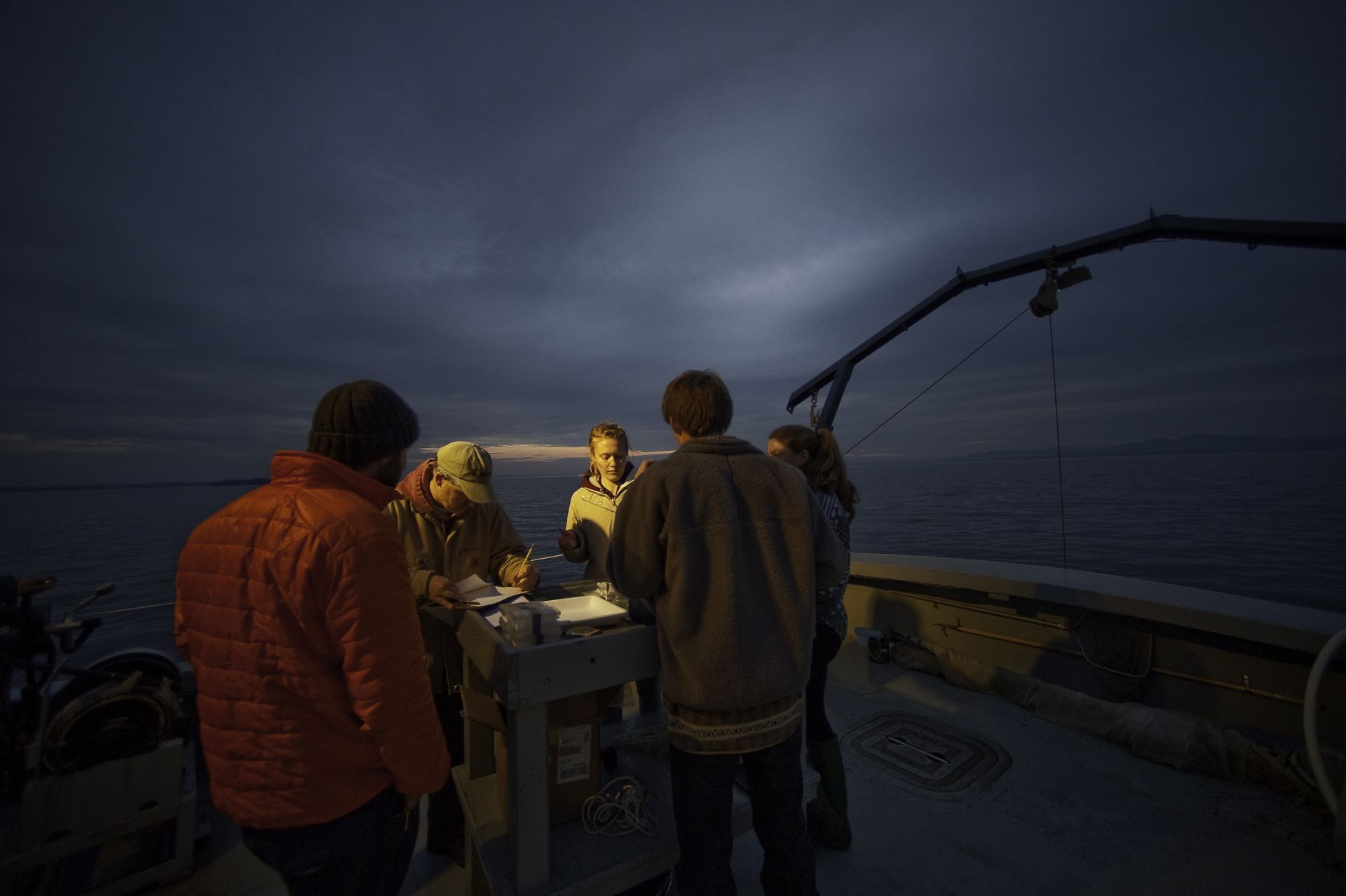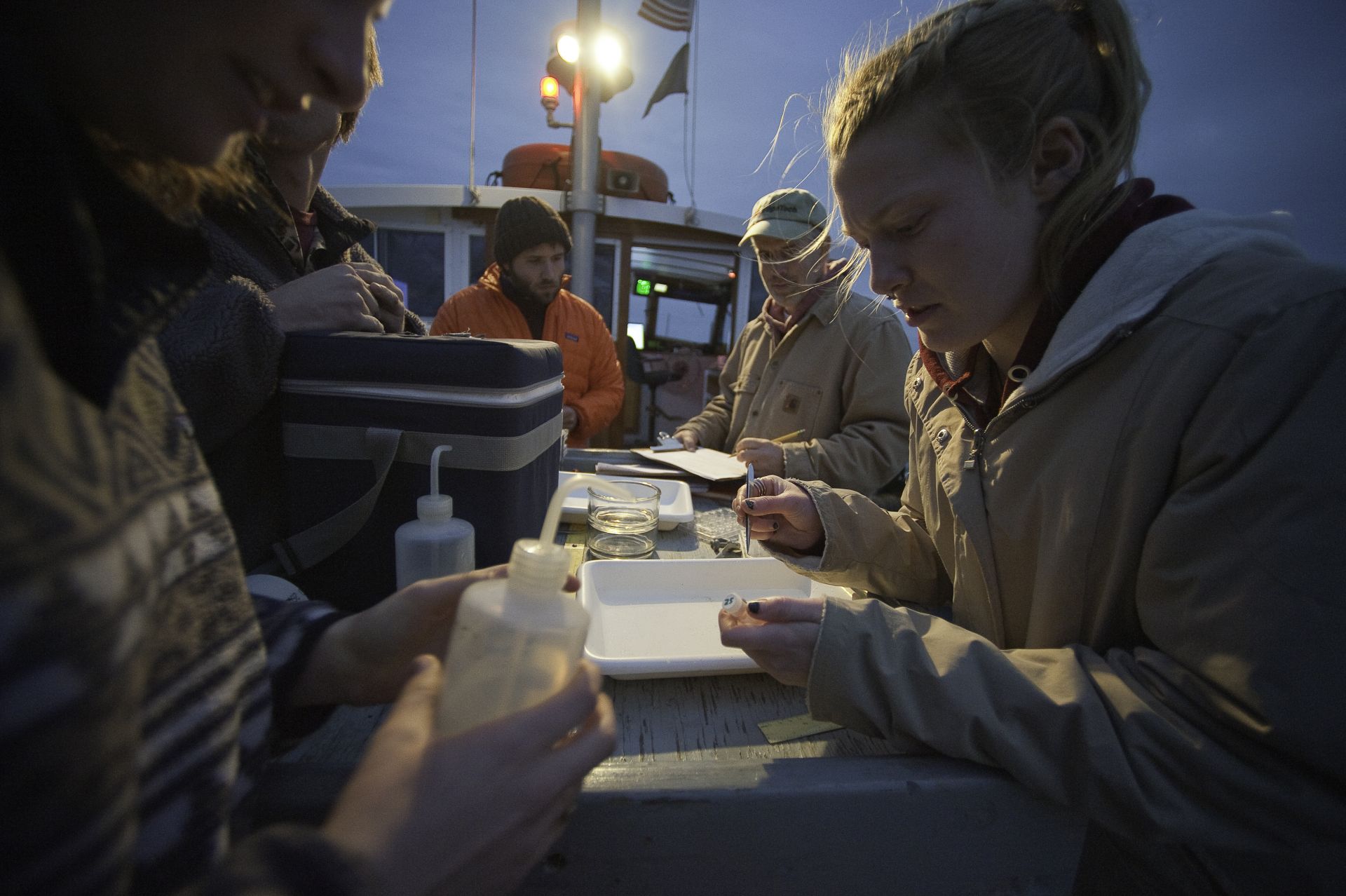Creating an Ecosystem
for Change
Photo by Sally McCay.
People around the world, including here in Vermont, are facing environmental challenges on an unprecedented scale. These challenges are multilayered and interwoven—and the solutions must be as well. At UVM, we are building a groundbreaking ecosystem of data, expertise, creativity, and determination that is helping create positive change for the benefit of all species that dwell on earth.
Researchers, scholars, students, advocates, and allies are interacting, informing, and inspiring each other in a highly collaborative and creative environment that spans campus and extends to scores of partner institutions and field sites around the world. The impact of what’s happening here is being felt far and wide. Much of this work is made possible, or greatly enhanced, by philanthropic support from people who care about the environment and believe in UVM’s power to make a difference. Here is a small sample of the programs, projects, and collaborations that are thriving in UVM’s unique ecosystem.
Gund Institute for Environment
The Gund Institute for Environment at UVM exists because environmental issues like climate change, feeding the planet, and water security will define this century. Solving these complex problems is our generation’s grand challenge, and universities have a crucial role to play. The Gund Institute is a body of 180 researchers, leaders, and students drawn from the natural and social sciences, business, health, engineering, and the humanities, united by an ambitious and urgent mission: “Mobilize scholars and leaders to understand and solve the world’s critical environmental problems.”
The Gund’s strategy is threefold. First, it catalyzes new collaborations among UVM’s extraordinarily creative and talented scholars, providing startup grants for exciting research and scholarships for outstanding graduate students, postdocs, and undergrads. Second, it connects UVM with leaders in government, industry, and society, partnering with 43 organizations in 10 countries, highlighting UVM discoveries worldwide and serving as a global convener to mobilize minds and accelerate action. Finally, the Gund helps focus UVM’s talents and resources on four pressing global issues: climate solutions, health and well-being, sustainable agriculture, and resilient communities.
Relaunched with a generous gift from the Gund family in 2017, the Institute’s new approach is already yielding results. Gund Catalyst Awards have provided over $500,000 to spark pioneering new research on global climate modeling, renewable biofuels, sustainable agriculture, the psychological value of city parks, and many other topics. These projects have already attracted over $1 million in additional outside funding. Gund efforts are also informing policies at state and national levels and attracting interest from a wide range of influential media outlets, including The New York Times, NPR, CNN, The Washington Post, and The Economist.
The Gund’s dynamic model is also inspiring new philanthropic investment at UVM. The Apis Fund, recently created by an anonymous donor, will support local, national, and international efforts to stabilize bee populations and the valuable pollination services they provide to farmers. Another generous gift, from Richard ’66 and Elaine Barrett, is enabling graduate students in the College of Engineering and Mathematical Sciences to conduct interdisciplinary research on global environmental issues alongside Gund Institute researchers. And the new Leahy Scholars Initiative (see Campus Highlights) will help promote a deeper understanding of complex global environmental issues by providing funding for selected doctoral students and post-doctoral researchers engaged in activities supported by the Gund Institute.



UVM researchers investigating the health of bee populations in Cuba. Photos by James Morgan (above) and Allie Smith (middle).
Gund Family Challenge
To inspire philanthropy and increase the Gund Institute’s global impact, the Gund family has issued a challenge: they will donate an additional $4 million if UVM can raise $8 million for the Gund Institute by 2022. Please help us solve environmental issues by calling the UVM Foundation at 1-888-458-8691 or visit go.uvm.edu/givetogund.



Professor Jason Stockwell, director of the Rubenstein Ecosystem Science Laboratory, and students conduct research on Lake Champlain aboard the R/V Melosira. Photos by Sally McCay.
Rubenstein Ecosystem Science Laboratory
Freshwater lakes are a crucial element in humankind’s complex and dependent relationship with our natural world. Understanding the ecology of lakes and their watersheds—and how they are being impacted by human activity and climate change—is vital to developing effective public policies and personal behaviors that will protect and improve water quality, animal habitat, and economic productivity for future generations.
In UVM’s Rubenstein Ecosystem Science Laboratory, students, staff, and faculty study aquatic ecology and watershed sciences in pursuit of these goals. The Rubenstein Lab’s research sites range from small ponds and brooks to the largest lakes in the world, but its most important site is the one just outside its door: Lake Champlain. With basins representing a diverse range of lake types and habitats, Lake Champlain provides opportunities to scale research from local to global. For over 30 years, much of this research has been made possible by the R/V Melosira, a vessel that serves as a floating laboratory, a site for groundbreaking experiential learning and instructional programs for students across the UVM campus, and a powerful community outreach tool for the Rubenstein Lab and the University of Vermont.
“The lab and Rubenstein School are at the cutting edge of ongoing research that is crucial to enabling change,” says F. Peter Rose ’54, who has endowed a permanent fund to help support the Melosira and UVM’s other research vessels. He hopes that the fund will “help the Rubenstein Lab extend the knowledge learned in the Lake Champlain Basin to lakes and watersheds around the world.”
Students in the Grossman School’s SI-MBA program visit the headquarters of Ben & Jerry’s to learn about the company’s sustainable business practices.
Photo by Lauren Frisch.
The Sustainable Innovation MBA
It is clearer now than ever before that business and industry have a major role to play in addressing current environmental challenges, and in preventing future ones. UVM’s Grossman School of Business has been a leader in thinking about the relationship between business and the environment for years, and in 2014 it replaced its traditional MBA with the “Sustainable Innovation MBA.” The SI-MBA program integrates principles of sustainability into every required course—it’s the very essence of the curriculum—and this sets it apart from the majority of other business schools that concentrate their thinking about sustainability in “saddlebag” centers. As Stuart Hart, Steven Grossman Endowed Chair for Sustainable Business, put it recently to Bloomberg Businessweek, “The problem is, you can always take the saddle off the horse, and it’s the same old horse.”
Today, Grossman’s SI-MBA is the nation’s top-ranked “green MBA” program according to Princeton Review, and is the fourth-best Better World MBA program according to Corporate Knights. Applications have been increasing 20 to 30 percent year over year. Students are drawn by the way the 12-month accelerated program trains them to address the central challenges that society faces—not only environmental issues, but also ethics, poverty, and inequality as well—through the lens of enterprise and entrepreneurship. They also appreciate how experienced-based learning is a central component of the curriculum. Building on the intensive coursework of the first nine months, students spend three months in a full-time practicum with a host organization where they focus on real challenges and opportunities in sustainable innovation in Vermont, the United States, or internationally. These students realize that the future of business is in innovating to turn profits while also helping to solve social and environmental problems.
Photo by Sally McCay.
The Environmental Sciences Major
Today’s undergraduates will be tomorrow’s leaders in the movement to address environmental challenges at all levels. For this reason, UVM provides outstanding educational opportunities for students interested in developing a greater understanding of the interplay between earth’s dynamic physical, biological, and social systems. Over 1,000 students—about 10% of UVM’s undergraduate population—are currently majoring in environmental studies, environmental sciences, or environmental engineering.
Students in the environmental sciences program take a core curriculum based in the natural sciences and then concentrate in one of nine focus areas (such as water resources, ecological design, or conservation biology and biodiversity). These focus areas allow students from different colleges to approach environmental problems in different ways. The Rubenstein School provides a degree with a broad-based understanding of the environment, the College of Arts and Sciences brings the rich context found in the liberal arts, and the College of Agriculture and Life Sciences incorporates environmental sciences with agricultural literacy.
Regardless of a student’s college or concentration, the environmental sciences program prioritizes hands-on research, internships, and service-learning opportunities. Led by award-winning teacher-scientists, majors use Vermont as their classroom and laboratory, from mountain, to forest, to field, to lake. For example, in ENSC 201: Recovery and Restoration of Altered Ecosystems, students tackle recovery of a damaged ecosystem, such as a forest, stream, or wetland. They develop a restoration plan based on their field work and acquire skills that will prepare them for on-the-job experiences after graduation. UVM students contribute to society by identifying, analyzing, and solving environmental issues before they even graduate.


UVM Researchers opening up milkweed pods. Photos by Sally McCay.
